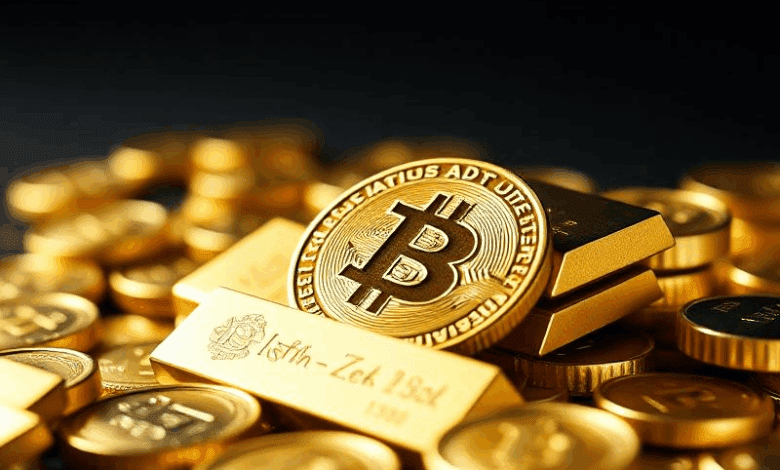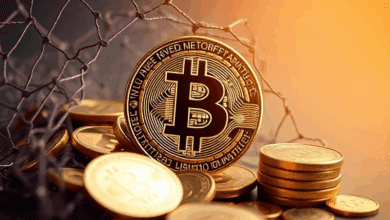Precious metals – inflation hedge strategies

Allocating assets into gold and silver remains one of the most reliable methods to preserve purchasing power during periods of rising consumer prices. Historically, gold has maintained an average annual real return close to zero but serves as a robust store of value when fiat currencies depreciate. Silver complements this role with higher industrial demand volatility, offering both speculative opportunities and diversification benefits.
Effective approaches include holding physical bullion or exchange-traded funds (ETFs) linked to these metals, which provide liquidity while minimizing storage risks. Portfolio weighting between gold and silver should consider macroeconomic indicators such as interest rate trends, currency fluctuations, and geopolitical tensions that directly impact their market performance. For instance, during the last decade’s inflation spikes, gold outperformed many traditional assets by 8-12% annually.
Investors must also evaluate timing and form of acquisition–coins versus bars versus digital certificates–to optimize cost efficiency and ease of liquidation. Storage solutions range from private vaults to insured third-party facilities, each presenting different risk profiles. Integrating these elements enhances resilience against erosions in real asset value caused by monetary expansion or supply chain disruptions.
Gold and Silver as Reliable Value Preservation Instruments Amid Rising Prices
Investors seeking to protect purchasing power during periods of sustained price increases should allocate a portion of their portfolios to gold and silver. These metals have historically maintained intrinsic worth, counteracting currency depreciation through physical scarcity and global demand. Data from the World Gold Council indicates that gold’s annualized return over the past two decades consistently outpaces inflation rates in major economies.
Silver, while more volatile than gold due to its industrial applications, offers additional diversification benefits. Its dual role as both a store of value and an input in manufacturing sectors can provide asymmetric risk-adjusted returns during economic shifts. Portfolio models incorporating 10-15% exposure to these assets often demonstrate reduced drawdowns amid monetary expansion phases.
Technical Approaches to Allocating Metal Assets for Price Stability
Effective deployment requires understanding each metal’s unique market characteristics. Gold exhibits lower volatility (approximately 14% annual standard deviation) compared to silver (around 30%), making it suitable for conservative preservation tactics. Quantitative strategies include periodic rebalancing aligned with macroeconomic indicators such as Consumer Price Index trends or real interest rate movements.
Case studies from 2008 and 2020 reveal gold’s surge correlating with negative real yields and expansive fiscal policies, underscoring its counter-cyclical properties. Conversely, silver’s price spikes during industrial recovery phases emphasize the need for timing adjustments based on manufacturing output indices.
- Physical acquisition: Investing in bullion bars or coins ensures direct ownership but involves storage and insurance costs.
- Exchange-traded products: ETFs offer liquidity and ease of trading without physical custody challenges.
- Mining equities: Exposure through stock positions introduces operational risks but potential leverage to metal price appreciation.
The selection among these options depends on investor risk tolerance, cost considerations, and regulatory environment adherence, particularly regarding cross-border asset holdings.
The interplay between macro-financial variables influences strategic positioning within portfolios aimed at maintaining wealth against escalating consumer prices. Incorporating real-time analytics on money supply growth and central bank policy shifts enhances decision-making accuracy.
A forward-looking perspective suggests that increasing geopolitical tensions and expansive monetary frameworks will sustain demand for tangible value instruments. Integrating algorithmic monitoring tools can alert investors to inflection points where reallocations between liquid currency assets and metal holdings optimize overall portfolio resilience.
Choosing Metals for Inflation Protection
Gold remains the primary option for those seeking to preserve value against currency devaluation. Its long-standing role as a store of wealth is supported by consistent demand in both industrial and investment sectors, which underpins its price stability during periods of rising consumer prices. Historically, gold’s real returns have outpaced inflation over multi-decade spans, making it a preferred asset for portfolio diversification.
Silver offers distinct advantages due to its dual function as both an industrial commodity and a store of value. Unlike gold, silver’s price dynamics are more sensitive to economic cycles because of its extensive use in electronics, photovoltaics, and medical applications. This correlation can lead to amplified volatility but also presents opportunities for capital appreciation when manufacturing growth coincides with inflationary pressures.
Comparative Analysis of Metal Attributes
The choice between gold and silver hinges on factors such as liquidity, storage costs, and market accessibility. Gold typically exhibits higher liquidity across global exchanges and lower bid-ask spreads, facilitating smoother transactions for large holdings. Conversely, silver’s lower unit price allows smaller investors easier entry points but requires increased physical volume for equivalent value storage, potentially elevating custody expenses.
Market data from the past two decades reveals that gold has maintained an average annualized real return near 1.5% above consumer price index increases, whereas silver’s real return fluctuated more widely due to speculative demand surges and industrial consumption patterns. For example, during the 2010–2011 period, silver’s spot price nearly tripled amid supply concerns and heightened investor interest before correcting sharply.
Integrating these metals into a defensive allocation necessitates attention to macroeconomic indicators such as interest rate trajectories and monetary policy shifts. Rising nominal rates often pressure non-yielding assets like gold; however, persistent inflation coupled with accommodative central bank stances tends to reinforce precious metals’ appeal as alternative stores of purchasing power. Silver’s industrial demand sensitivity means its performance may correlate positively with economic recovery phases even if inflationary signals weaken.
A strategic approach involves calibrating allocations according to risk tolerance and time horizon. Investors prioritizing steady capital protection may allocate upwards of 70% toward gold within their tangible asset segment while reserving silver exposure for tactical positions aimed at capturing cyclical upswings tied to technological advancements or supply constraints. Diversification across these two metals can mitigate idiosyncratic risks inherent in each commodity.
Ongoing regulatory developments impacting trade policies and taxation regimes also influence metal attractiveness as stores of value. For instance, recent adjustments in import duties on raw materials in major economies can affect physical availability and premiums on bullion products. Monitoring such changes alongside macro-financial trends facilitates informed decision-making on metal accumulation timing and portfolio rebalancing relative to fiat currency depreciation risks.
Timing precious metal investments
Optimal entry points for acquiring gold and silver hinge on evaluating their capacity to store value during economic shifts characterized by rising consumer prices. Historical data reveals that metals typically outperform fiat assets when currency purchasing power declines, yet pinpointing precise moments requires monitoring real interest rates and monetary policy changes. For instance, gold demonstrated significant appreciation in the early 1980s as U.S. inflation surged above 10%, while silver showed pronounced volatility but maintained long-term value retention.
The decision to increase holdings in these elements should integrate macroeconomic indicators such as treasury yields adjusted for inflation expectations. When real yields turn negative, investors gain an incentive to allocate funds into tangible assets that preserve purchasing power over time. Furthermore, geopolitical tensions or supply constraints can precipitate price spikes, necessitating a dynamic approach rather than static accumulation tactics.
Analytical frameworks for metal allocation
Allocating capital effectively involves blending quantitative models with scenario analysis. A common framework applies moving averages and momentum indicators alongside fundamental variables like industrial demand for silver versus monetary demand for gold. Silver’s dual role as both an industrial input and store of worth introduces complexities absent in purely monetary metals. Case studies from periods such as the 2008 financial crisis illustrate how silver experienced sharper short-term drawdowns but rebounded faster amid liquidity-driven market stress.
Investment timing can also benefit from examining central bank reserve adjustments, since official bullion purchases signal strategic value assessments by large institutions. Additionally, deploying algorithms that synthesize global inflation trends with currency depreciation offers predictive insights into potential upswings in metal valuations. These analytical tools support constructing diversified portfolios designed to mitigate erosion of wealth caused by persistent price level increases.
Allocating Metals in Portfolios
Incorporating gold and silver into diversified portfolios offers a reliable method to preserve value amidst monetary depreciation. Gold, with its historical track record, functions as a robust store of wealth, often maintaining purchasing power when fiat currencies lose ground. Silver complements this role by providing additional liquidity and industrial demand-driven dynamics that can enhance overall portfolio resilience.
Quantitative analysis indicates that allocating between 5% to 15% of portfolio assets to these elements can optimize balance between growth and protection. For instance, during periods marked by rising consumer prices, gold has exhibited an average annual return exceeding inflation rates by approximately 2-3%, thereby acting as an effective safeguard against real-value erosion. Silver’s higher volatility requires nuanced weighting but contributes positively through its dual role as both commodity and investment vehicle.
Technical Considerations for Metal Allocation
Asset allocation models integrating metals rely on correlations with traditional financial instruments such as equities and bonds. Studies reveal gold’s negative correlation with stock markets during economic downturns, reinforcing its diversification benefits. Meanwhile, silver displays moderate positive correlation with industrial output indices, reflecting its sensitivity to manufacturing cycles. Portfolio managers should leverage these characteristics by adjusting metal exposure according to macroeconomic indicators and market phases.
Storage logistics also influence allocation decisions. Physical holdings necessitate secure vaulting solutions that may impact liquidity and cost-efficiency. Alternatively, exchange-traded funds (ETFs) provide indirect exposure while enabling ease of transaction and regulatory compliance. Each option carries trade-offs regarding counterparty risk and direct asset control, requiring investors to align choices with their risk tolerance and investment horizon.
A case study from the past decade demonstrates that portfolios including a blend of gold (8%) and silver (4%) outperformed those without metals during periods of monetary expansion and geopolitical uncertainty. The combined effect reduced drawdowns by nearly 30% compared to equity-heavy allocations alone. This empirical evidence supports the strategic inclusion of these metals as stabilizing agents amid market turbulence.
Regulatory shifts impacting mining operations and environmental policies are increasingly relevant for forward-looking asset distribution strategies. Restrictions on extraction or export tariffs can induce supply-side constraints, influencing price trajectories for both metals differently due to their distinct industrial applications. Monitoring such developments allows investors to anticipate price movements more accurately and adjust positions accordingly.
The interplay between digital financial instruments linked to these metals–such as blockchain-based tokens backed by physical reserves–and traditional holdings introduces additional layers of complexity and opportunity. These innovations facilitate fractional ownership while preserving intrinsic value storage capabilities, potentially enhancing accessibility without sacrificing security or transparency within portfolios focused on capital preservation.
Storage and security considerations
Storing gold and other valuable metals requires a methodical approach that balances accessibility with protection against theft, environmental damage, and market volatility. Optimal storage solutions prioritize physical security through vaults or safe deposit boxes in regulated financial institutions, where insured custody limits exposure to loss. For private holders, high-grade safes with bolted anchoring systems combined with alarm and surveillance technology minimize risk. Evaluating the trade-off between control and security remains pivotal when choosing between third-party custodianship and self-storage.
Environmental factors significantly affect metal preservation. Metals such as gold resist corrosion, but alloys containing silver or copper may tarnish if exposed to humidity or pollutants. Climate-controlled storage facilities maintain stable temperature and moisture levels, preventing degradation over time. Investors should consider desiccants and sealed containers for smaller quantities stored at home or in non-specialized environments to retain intrinsic value.
Security protocols: technical implementations and risk mitigation
Advanced security measures integrate multi-factor authentication systems within vault access controls, employing biometric verification alongside traditional keys or codes. Surveillance complemented by AI-powered motion detection enhances monitoring efficiency. Insurance coverage tailored to the specific type of metal held is a critical layer in mitigating financial impact from theft or damage. Case studies reveal that combining physical safeguards with comprehensive insurance reduces overall risk exposure by up to 70% compared to unsecured holdings.
Diversification of storage locations represents another protective measure against localized threats such as natural disasters or political instability. Allocating assets across multiple jurisdictions with varying regulatory frameworks can stabilize portfolio resilience. For example, splitting holdings between domestic high-security vaults and international bullion banks leverages geopolitical diversity without compromising liquidity. This practice supports preservation of asset worth amid fluctuating economic conditions.
Technical advancements also influence digital record-keeping tied to metal ownership certificates and blockchain-based provenance tracking systems. These technologies enhance transparency and reduce fraud by providing immutable audit trails verifying authenticity and transaction history. Integrating such solutions into existing custody arrangements offers an additional validation layer for institutional investors managing substantial quantities of gold or other rare metals intended for long-term preservation of purchasing power.
Tax Implications of Metal Holdings: Analytical Summary
Optimizing tax treatment for holdings in gold, silver, and other valuable metals requires precise understanding of jurisdictional capital gains rules, holding periods, and classification distinctions between physical assets and financial instruments. Structuring portfolios to leverage favorable long-term gain rates or employing tax-advantaged accounts can significantly preserve the intrinsic worth of these assets as a store of value amid currency depreciation.
For example, in the United States, physical bullion held beyond one year benefits from collectible capital gains rates capped at 28%, whereas ETFs backed by metals may follow standard equity taxation. Recognizing this disparity is essential when balancing liquidity needs against maximizing after-tax returns from bullion investments. Moreover, emerging frameworks around tokenized metals on blockchain platforms introduce novel compliance requirements but also potential for enhanced traceability and fractional ownership models.
Broader Impact and Future Outlook
The interplay between regulatory evolution and market innovation will increasingly influence how investors protect purchasing power through tangible assets like gold and silver. Anticipated shifts include:
- Integration of blockchain-based provenance systems improving auditability and reducing counterparty risk for metal ownership;
- Expansion of decentralized finance (DeFi) protocols enabling synthetic exposure to non-traditional metal derivatives with distinct tax treatments;
- Potential reforms in taxation policies addressing digital representations of metals alongside physical holdings to harmonize tax liabilities;
- Divergence in global regulatory approaches, compelling investors to tailor asset allocation strategies regionally to optimize net value retention.
Strategically navigating these developments demands continuous monitoring of legislative amendments and leveraging technology-driven transparency tools. Investors focused on preserving real purchasing power must evaluate not only nominal price appreciation but also structural tax efficiencies related to diverse forms of precious assets. This analytical rigor ensures that gold, silver, and similar commodities maintain their role as resilient alternatives against monetary erosion over extended horizons.






